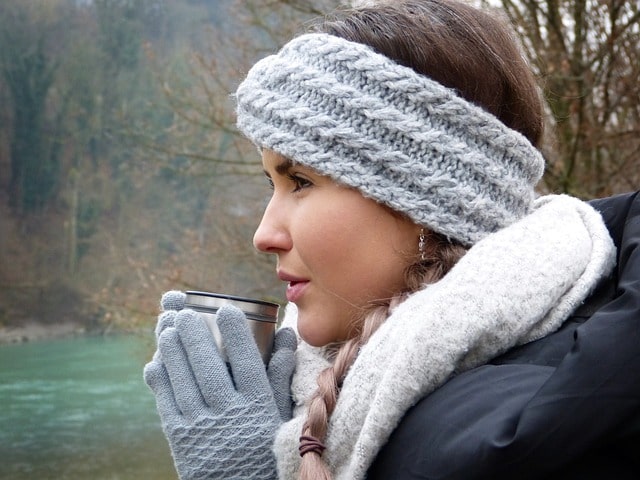Introduction: The controversy surrounding headbands and hair health
In recent years, a significant debate has emerged regarding the impact of headbands on hair health. As someone who frequently includes headbands in my daily attire, I’ve often pondered this question myself. Are headbands bad for your hair? This inquiry is not merely a matter of fashion or personal style but touches upon the broader concerns of hair care and health. In this article, I aim to delve deep into this controversy, armed with research, expert opinions, and personal experiences, to uncover the truth about headbands and their effect on our hair.
The use of headbands spans centuries, evolving through various cultures and fashion trends. Once primarily functional, used to keep hair away from the face or manage sweat during physical activity, headbands have transitioned into a stylish accessory cherished by many. However, with their rise in popularity, concerns have surfaced regarding potential hair damage. These concerns include breakage, hair loss, and other forms of stress to the scalp and hair follicles caused by frequent headband use.
Engaging in this discussion, it’s crucial to approach the topic with an open mind and a critical eye. The relationship between headbands and hair health is not black and white. Instead, it’s a nuanced issue influenced by several factors, including the type of headband, the material it’s made from, how tightly it’s worn, and the inherent qualities of one’s hair. Let’s embark on this journey to explore the complexities surrounding headbands and their true impact on our hair.
The impact of headbands on hair health
Diving into the heart of the matter, it’s essential to understand how headbands can potentially affect hair health. The primary concern is mechanical damage, which can occur when hair is repeatedly subjected to tension, friction, or pressure. This type of damage is not unique to headbands and can be seen with other hair accessories and styling practices. However, headbands, particularly those with a tight grip or made from harsh materials, can exacerbate these issues.
When a headband is worn too tightly around the head, it can pull on the hair at the roots, leading to tension alopecia over time. This form of hair loss results from constant pulling on the scalp, weakening the hair follicles, and potentially leading to permanent damage if not addressed. Furthermore, the friction caused by headbands moving against the hair can roughen the hair’s cuticle, the outermost layer, leading to breakage, split ends, and a frizzy appearance.
It’s also worth considering the material composition of headbands. Certain materials can be more damaging than others. For example, headbands made from rough fabrics can cause more friction, while those with metal parts can snag hair and lead to breakage. The way a headband is designed, including its width and flexibility, also plays a role in its impact on hair health.
Common misconceptions about headbands and hair damage
Amidst the concerns about headbands and hair health, several misconceptions have gained traction, muddying the waters of our understanding. One prevalent myth is that all headbands cause hair loss. This blanket statement ignores the diversity of headbands and how they are worn. Not all headbands exert the same level of pressure or friction on the hair, and not every individual’s hair responds in the same way to these stresses.
Another common misconception is that headbands made from natural materials are inherently better for hair health. While it’s true that softer, more flexible materials can reduce the risk of mechanical damage, the overall design and fit of the headband are equally important. A tightly worn headband made from silk can still cause tension alopecia if it’s not adjusted to fit comfortably.
It’s also mistakenly believed that the occasional use of headbands is harmless, regardless of their type or material. While infrequent use certainly reduces the risk of damage, it does not entirely eliminate it. The cumulative effect of wearing headbands, even sporadically, can still contribute to hair stress over time, especially if they are worn too tightly or made from damaging materials.
The truth about headbands: Understanding the factors that contribute to hair damage
To truly grasp the relationship between headbands and hair health, it’s crucial to consider the various factors that contribute to hair damage. The type of headband is a significant factor. Elastic bands that tightly grip the hair can cause more damage than looser, wrap-around styles. The material is also critical; headbands with smooth, soft fabrics are less likely to cause friction and breakage than those made from rough or textured materials.
The manner in which headbands are worn plays a pivotal role as well. Wearing a headband in the same position every day can exert continuous pressure on the same areas of the scalp and hair, leading to localized damage. Alternating the position or choosing headbands with a looser fit can help mitigate this risk. Additionally, the condition of one’s hair influences how it responds to the stress of wearing headbands. Hair that is already damaged or weakened from chemical treatments, heat styling, or other mechanical stressors is more susceptible to further damage from headbands.
Understanding these factors enables us to make informed decisions about selecting and wearing headbands in a way that minimizes the risk of hair damage. It’s not about demonizing headbands but about recognizing and respecting the needs of our hair when incorporating them into our styles.
Choosing the right headband for your hair type
Selecting the appropriate headband for your hair type is a crucial step in mitigating the risk of hair damage. For those with fine or fragile hair, opting for headbands made from soft, stretchy materials with a wide band can distribute pressure more evenly, reducing the risk of tension and breakage. Individuals with thick or curly hair might prefer headbands with a bit more grip to effectively manage their hair, but they should still seek out options with smooth, hair-friendly fabrics.
The design of the headband also matters. Adjustable headbands or those that tie at the back offer more flexibility in terms of fit, allowing you to secure them without excessive tightness. Additionally, considering headbands with padded or lined interiors can provide an extra layer of protection between the headband and your hair, further reducing the risk of damage.
It’s also beneficial to have a variety of headbands at your disposal, allowing you to rotate between them and avoid putting constant pressure on the same areas of your scalp and hair. This variety not only keeps your hairstyles fresh and exciting but also contributes to better hair health by distributing the mechanical stress more evenly over time.
Tips for wearing headbands without causing damage
Wearing headbands without causing damage to your hair is possible with the right practices. First and foremost, be mindful of how tightly you’re securing the headband. It should feel comfortable on your head, without pulling or pinching. If you notice any discomfort or tension, it’s a sign that the headband is too tight.
Another tip is to limit the duration for which you wear headbands. Giving your hair a break from any accessories allows it to rest and recover from any potential stress. Try to alternate days when you wear headbands or switch up your hairstyle to include headband-free options.
It’s also wise to prepare your hair before placing a headband. Using a leave-in conditioner or a protective hair serum can create a barrier between your hair and the headband, reducing friction and the risk of mechanical damage. Ensuring that your hair is dry and not overly tangled before applying a headband can also prevent unnecessary stress and breakage.
Alternatives to headbands for hair styling
For those looking to reduce their use of headbands or seeking alternative hair accessories, there are numerous options that can provide style without compromising hair health. Hair clips and barrettes offer a way to manage and accessorize your hair with minimal pressure. Scarves and bandanas can be tied loosely around the head, offering the functionality of a headband without the tight grip. Additionally, styling hair with braids or updos can keep hair out of your face and under control without the need for any accessories at all.
Experimenting with these alternatives can not only diversify your hairstyle repertoire but also give your hair a much-needed break from the constant pressure of headbands. It’s all about finding the right balance between style and health, ensuring that your hair remains vibrant and strong.
Debunking popular myths about headbands and hair damage
In our quest to understand the impact of headbands on hair health, it’s crucial to debunk popular myths that cloud our judgment. As we’ve explored, not all headbands cause hair damage, and the risk can be significantly mitigated by choosing the right type of headband and wearing it correctly. Furthermore, natural materials are not a panacea; the overall design and fit of the headband are equally important in preventing hair damage.
Another myth to dispel is the notion that only tight, elastic headbands cause damage. While these types can indeed be more harmful, any headband worn improperly or made from damaging materials can pose a risk to hair health. It’s the combination of material, design, fit, and wear that determines the impact of a headband on your hair.
Taking care of your hair while wearing headbands
Maintaining healthy hair while enjoying the aesthetic benefits of headbands involves a holistic approach to hair care. Regular conditioning treatments can help keep your hair strong and resilient against potential damage from headbands. Incorporating a balanced diet rich in vitamins and minerals that support hair health is also beneficial. Additionally, minimizing other sources of mechanical stress on your hair, such as tight hairstyles, heavy extensions, or frequent heat styling, can help preserve its integrity.
Being proactive about hair health, by routinely inspecting your hair and scalp for signs of stress or damage, enables you to address issues before they escalate. This vigilance, coupled with the judicious use of headbands and other hair accessories, can ensure that your hair remains healthy and vibrant, even as you enjoy the diverse styles that headbands can offer.
Conclusion: Making informed decisions about headbands and hair health
The journey to uncover the truth about headbands and their impact on hair health has revealed that the relationship between the two is complex and multifaceted. Headbands, when chosen wisely and worn correctly, do not have to be detrimental to your hair health. By understanding the factors that contribute to hair damage, selecting the right headband for your hair type, and adopting hair-friendly practices, you can enjoy the aesthetic appeal of headbands without compromising the well-being of your hair.
As we navigate through the myriad of hair accessories available to us, making informed decisions becomes paramount. This involves not only scrutinizing the headbands we choose but also taking a holistic approach to hair care, ensuring that our hair remains strong and healthy enough to withstand the styles we love. The truth about headbands and hair health is not a simple yes or no answer but a call to mindful and informed styling choices. Let’s embrace this knowledge, making decisions that honor both our style and our hair’s health.

